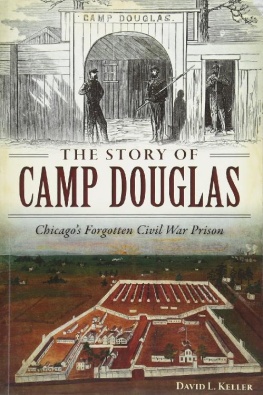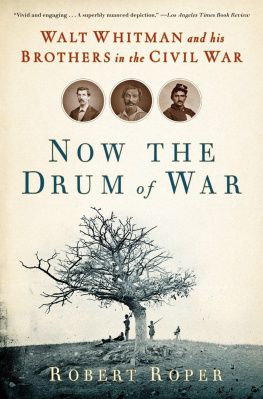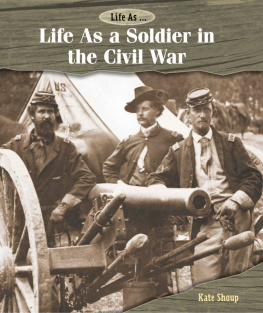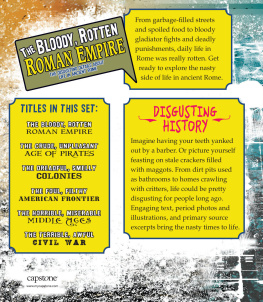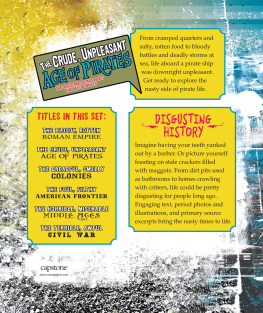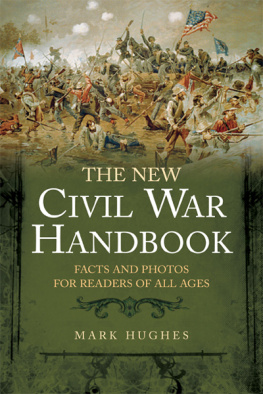The United States During the Civil War
- NOVEMBER 1860 Abraham Lincoln is elected president.
- FEBRUARY 1861 Confederate States of America is formed; Jefferson Davis is chosen CSA president.
- APRIL 12, 1861 Fort Sumter attacked; the Civil War begins.
- SEPTEMBER 17, 1862 Battle of Antietam
- JULY 1-3, 1863 Battle of Gettysburg
CONFEDERATE GENERAL ROBERT E. LEE
It is well that war is so terrible, lest we should grow too fond of it.
- NOVEMBER 19, 1863 Lincoln delivers his famous Gettysburg Address.
PRESIDENT ABRAHAM LINCOLN
Government cannot endure permanently half slave and half free.
- FEBRUARY 1864 First war prisoners arrive at Andersonville prison.
- APRIL 9, 1865 Confederate General Robert E. Lee surrenders to Union General Ulysses S. Grant at Appomattox.
- APRIL 14, 1865 Lincoln is shot at Fords Theatre.
- APRIL 15, 1865 Lincoln dies.
- MAY 1865 The remaining Confederate troops surrender.
NORTHERN FACTORIES
By 1860, industry was booming in the North. Factories made textiles, trains, ammunition, and other products.
SOUTHERN PLANTATIONS
Southern plantations grew many cash crops, including tobacco and cotton. By 1860, cotton made up 57 percent of the nations exports.
U.S POPULATION, 1860
FREE PEOPLE 27,489,561
SLAVES 3,953,760
CIVIL WAR DEATHS (18611865) 620,000
The War Begins
During the U.S. Civil War (1861-1865), eager young soldiers marched off to fight for Union or Confederate armies. These proud men wanted to defend their countries. But army life was filled with death, disease, and foul living conditions.
WOUNDED UNION SOLDIER
The war began on April 12, 1861, when Confederate troops fired cannons at Fort Sumter. When Union troops at the fort surrendered, cheers rang out in southern streets. Both sides were ready to defend their way of life. Most thought the war would be over by Christmas.
ATTACK ON FORT SUMTER, SOUTH CAROLINA
Northerners were quick to join the Union army. Pro-Union people favored a strong federal government. Most were generally opposed to slavery.
Southerners had opposed of 11 states.
When the fighting ended in May 1865, weary soldiers returned home to a changed nation. Many men limped on a leg and a crutch. No one was ever the same again.
Tattered Uniforms
How would you like to go to school wearing a scratchy jacket, tattered pants, and worn shoes? Thats just what Civil War soldiers wore whether they were marching, fighting, eating, or sleeping.
Uniforms for both sides were often in short supply. In the South, the government didnt make enough uniforms for all the soldiers. Confederate soldiers wore their regular clothes and parts of army uniforms.
Union soldiers were itchy all over thanks to uniforms made of rough, scratchy fabrics. Soldiers had no coats, gloves, or hats to protect them during winter.
Union soldiers wore blue uniforms while the uniforms of Confederate troops were gray.
Soldiers uniforms quickly looked like dirty rags. Uniforms became stiff and stinky from sweat. Jackets and pants were ripped, dirty, and spotted with blood. Uniforms were rarely washed. Underwear? Soldiers didnt change or wash their underwear for months at a time. Soldiers seldom received replacement clothing, so they took jackets, pants, or boots off the dead.
Socks protected a soldiers feet. But a soldiers socks went unwashed for weeks or months. They soon became stiff and filled with germs. As the war dragged on, soldiers wore their boots with bare feet. When boots wore out, soldiers wrapped their feet in rags and kept on marching.
Hard Ground, Wet Bedrolls
Sleeping outside might sound like fun to you, but for Civil War soldiers it was miserable. Little protected them from rain, snow, or summer heat. Even less protected them from pesky mosquitoes and body lice. Mosquitoes buzzed and bit all night long. Lice infested soldiers bedrolls, clothing, beards, and hair.
Lucky soldiers slept in canvas tents with dirt floors. Other soldiers slept on the ground on bedrolls. These blankets were rolled up and carried on the soldiers backs while they marched. If the ground was wet or if rain fell at night, bedrolls became soggy and muddy.
Crowded, filthy living quarters were great for bacteria and , cholera, and tuberculosis.
Civil War soldiers spent many cold nights sleeping outdoors on the ground.
FOUL FACT
Some soldiers slept in open-air beds made by piling hay or straw between two logs.
Teeth Dullers
Think school lunches are bad? Try dining on stale, moldy crackers day after day. Hoping for some meat with your meal? Look closer at the crackers. Those small specks are maggots. Sound disgusting? Maybe so, but hardtack crackers were standard food for Civil War soldiers.
Hardtack was made from flour, salt, and water. It was light and easy to carry. The salt in hardtack helped soldiers to sweat, which kept them from fainting in the heat.
HARDTACK
Hardtack crackers were called teeth dullers and iron plate biscuits because they were so hard. Worm castle was another name for hardtack because it often was full of weevils and maggots. Some soldiers dipped their hardtack in hot coffee to soften it and kill the worms. Others went ahead and ate the worms.
Meat was scarce for soldiers. Depending on what was available, soldiers ate the meat of cows, horses, mules, and even rats. Salt helped preserve meat. But often the meat was rotten.


